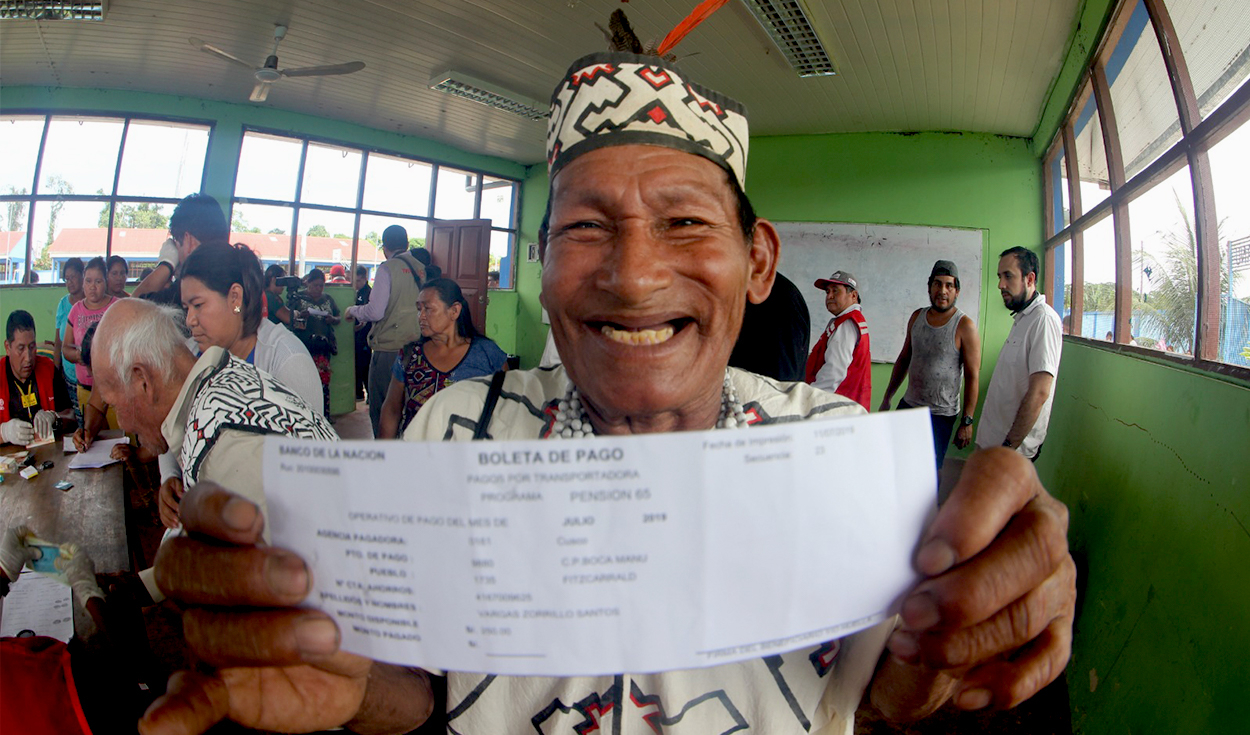
The executive director of the Pensión 65 program, Julio Mendigure Fernández, affirmed that it is a decision of the Ministry of Development and Social Inclusion (Midis) to maintain the S/300 subsidy from 2024, since the official amount that is delivered, of S/ 250 every two months, has lost its purchasing power.
“When Pensión 65 begins to operate, it allocates S/250 for two months and that at the time represented 85% of the value of the basic food basket, the amount now only covers 62% of the basic basket, the spending capacity for the Food We hope to officially convert the increase in the value of the subsidy in 2024, This year in practice we have been delivering S/300 every two months, the idea is to maintain it and continue to increase (the amount) progressively and according to budget availability“, explained Mendiguren during the Virtual Forum Pensión 65, the engine of an active life with good treatment.
Expand the coverage of Pensión 65
The official also explained that they are seeking to expand the coverage of the program, which today reaches 627,000 older adults, when the universe of people over 65 in extreme poverty is 900,000. The objective is that from 2024 people who already meet the requirements and the necessary documentation are progressively included.
For her part, Úrsula Martínez, in charge of the Social Protection Portfolio for Peru of the World Bank (WB)pointed out that the program should expand its coverage from people in extreme poverty to those who are in poverty, as is done in other countries in the region, because today it only allocates the equivalent of 0.1% of GDP to this program.
“The increase in coverage must be an intelligent increase. Urban poverty has increased, we have to do something with economically vulnerable people, there are people who are quite close to the line because they are people who are going to fall into poverty in the face of any shock and in Right now Peru is receiving a series of shocks. Climate change is not going anywhere, Peru is one of the most exposed countries“, explained the specialist.
Martínez added that it should be considered that the shocks do not have to be large and are mostly focused on certain places and in Peru there has been a very high frequency of these impacts, which is why the social protection system “It must be adaptive, able to increase its coverage temporarily, both horizontally and vertically.”
Source: Larepublica
Alia is a professional author and journalist, working at 247 news agency. She writes on various topics from economy news to general interest pieces, providing readers with relevant and informative content. With years of experience, she brings a unique perspective and in-depth analysis to her work.











